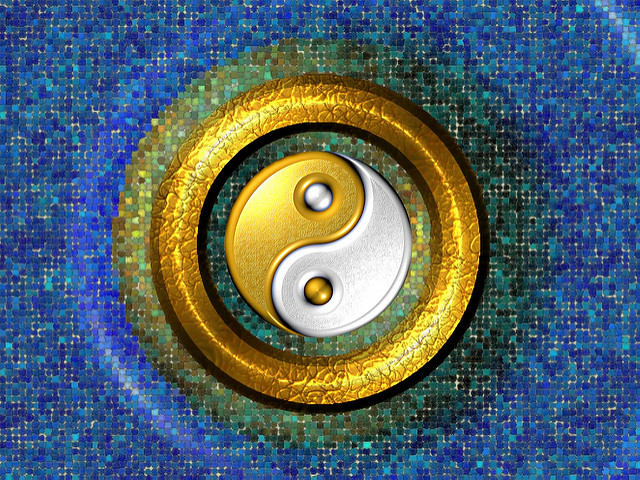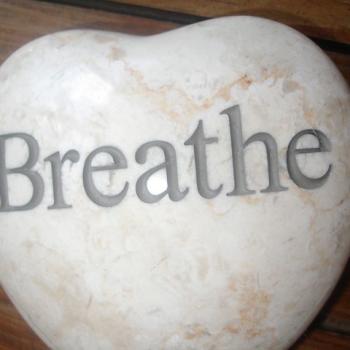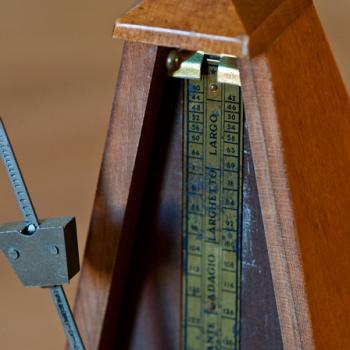
Balancing Contemplation and Action
One of the challenges of contemplative leadership is balancing contemplation and action.
We often tend to think of contemplation and action as opposite ends of the spectrum. Either we see ourselves sitting in reflection and meditation or as people of decisive action. It is difficult for us to see balancing contemplation and action as even possible.
Most of us have been practicing action for a long time, but are just learning contemplation.
We often experience contemplation as otherworldly, conceptual, and outside our everyday lives. Action can be easier for us to grasp and understand. Each of us acts in lots of ways each day. We are more comfortable with taking action.
Some of us are beginning to explore how contemplation and action coexist, or even fit together. We may look back on actions we have taken and reflect on them to learn their lessons. There may be memories we have forgotten long ago which continue to fuel our contemplation.
Starting to recognize the dynamic between contemplation and action is a step toward balance. We try different ways to combine action and contemplation, experimenting in our minds. Fumbling our way forward, we test various combinations and ideas.
How does contemplative leadership work for us? What do we really mean by contemplative leadership? Are contemplative leaders more thoughtful, more intelligent?
Can we find a balance of the seemingly contradictory aspects of action and contemplation?
What are the most effective ways for leaders to be contemplative and active? How does our leadership benefit from contemplation, and how from action?
Are there ways those of us who rely on action to become more contemplative? How do those of us who are contemplative focus on taking action?
Fitting Together Contemplation and Action
At times, I have clearly been more of an activist than a contemplative. At other times, I have relied more on the contemplative aspects of whom I am. More and more, I see these two strengths coming together.
My ability to get things done is a central part of my life. Achieving things is one of my greatest strengths. I am motivated to complete tasks, checking things off the list and moving on to the next thing. My abilities to set a course, stick with it, and meet my goals serve me well. Those skills have been central to my personal quest for justice, to my leadership. They are the ways I have tried to help others, and the ways I have sought spiritual meaning in my life. Action has shaped the time I spent in school, my relationships, my work, and my leisure. My tendency toward activism shapes the way I understand myself and is essential to who I am.
My life has also been shaped by a commitment to true depth. This commitment has drawn me to develop another set of my skills and abilities which also shape what I do and how I understand myself. I have the ability to listen, to take time, to discern what is right. The significance of not only accumulating a long list of accomplishments, but also recognizing and becoming my true self. Even more I have learned, and am still learning, to trust that my true self discerns what actions fit with who I am and what actions might be best left for others.
People often create a false dichotomy between contemplation and action; between being strategic and being monastic. For me, what is important is exploring and appreciating how the two fit and work together.
How Do We Balance Contemplation and Action?
Each of us has our own personal leadership. Our leadership is a complex network of skills and abilities, relationships and beliefs. We each lead in ways which are unique to us.
It is easy for us to divide people into good leaders and bad leaders. What we often mean by good leaders is leaders we like. We often view leaders we do not like as bad leaders.
Examples of contemplative leaders who have significantly changed the world are obvious. A leader who tends to be more contemplative than we are may make us uncomfortable. At the same time, examples of activist leaders who have made important contributions are also easy to see. Some leaders who expect more activism than we might appreciate can disturb us as well.
We may study leadership as an academic subject and learn from the lives of other leaders. Some of us learn about various aspects of leadership throughout history to find examples to follow.
Each of us, though, gains our most helpful lessons through our experience.
We find our own balance of contemplation and action on our own. It can often help to talk through our insights and questions with other people. Our leadership is a balance of what we learn from other people and our own personal perspectives.
What we know for certain is all leadership is a balance of contemplation and action.
Finding Our Own Balance of Contemplation and Action
Like many aspects of our leadership, contemplation and action work together and feed each other. We choose how to combine them in new ways each day and become stronger leaders.
The actions we take and learn about become the raw material for our reflection. What went well and what could have been better? Do we gain questions and insights as we reflect on our actions? How will what we gain shape our actions in the future?
Contemplation and action are not conflicting opposites. Rather than a spectrum there is a cycle of contemplation and action reaching back and reaching forward.
As contemplative leaders we reflect on what we have done. Our contemplation gives us new questions and insights which shape our next actions. Each day, each week, each month we find a balance which helps us become the leaders we can be.
Like my friends who are monks, we explore the examined life.
How will we balance contemplation and action today?
Where are contemplation and action out of balance for us this week?
[Image by MAMJODH]
Greg Richardson is a spiritual life mentor and leadership coach in Southern California. He is a recovering attorney and university professor, and a lay Oblate with New Camaldoli Hermitage near Big Sur, California. Greg’s website is StrategicMonk.com, and his email address is [email protected].












